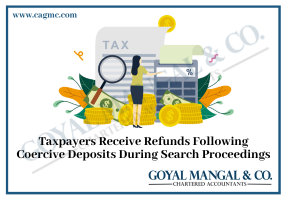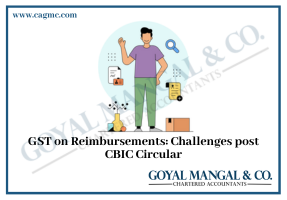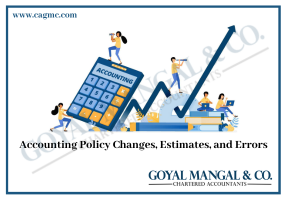
New beginnings are always great as you can bring changes to your existing plans. Well, this is pretty much true in the case of mutual fund investments as well. And if it’s a new year, it is perhaps a great time for investors to check, re-evaluate, and reflect on their investment portfolio for making necessary changes in it. Checklists are essential as they can easily counter the inefficiencies and can show the direction of improvement. In this blog, we are going to look at the 5-Point checklist for your mutual fund portfolio so that you can successfully reassess your portfolio.
|
Table of Content |
What is Mutual Fund?
A Mutual Fund is a type of company that pools money from investors and invests it in securities like stocks, bonds, and short-term debts. The holdings altogether are termed as its portfolio. Investors usually buy the shares in mutual funds that represent the investor’s partial ownership in the fund and also the income it generates.
What is the reason behind buying mutual funds?
Well, people usually buy mutual funds because of the following features:-
- Professional Administration: There is a high level of professionalism taken up by the fund managers. They research stuff for you. They shortlist the securities that are best for you and closely monitor the performance.
- Diversified Security: Bringing all the eggs to one basket is never a good idea. Mutual Funds generally invest in a wide range of companies and industries. This lowers the risk of falling because if one company crumbles there are always other companies to curb the scenario.
- Liquidity: Investors investing in a mutual fund can redeem their shares conveniently at any time for the current net asset value along with the redemption fees if any.
What are the benefits of Mutual Funds?
Along with providing professional administration and diversification, mutual funds also offer three ways to earn money, let us have a look at those:-
- Dividend Income: A fund might just earn from dividends on stock or interest on bonds. This fund then pays the shareholders all the income.
- Capital Gain Distribution: There is always a probability of the securities in a fund increasing. When the security that may have increased in price is sold, the fund also gets a capital gain. At the end of the year, the fund distributes these capital gains to the investors.
- Higher Net Asset Value: If the market value of a fund’s portfolio increases, then the value of the fund and its share also increases with it. The higher net asset value shows the higher value of your investment. If you ever feel like investing on mutual funds but struggle to get an idea about it then you can always visit CAGMC for getting the financial advices from the experts.
Checklist for your Mutual Fund Portfolio
Let’s have a detailed analysis of the 5-Point checklist for your mutual fund portfolio. This list will make you understand if you are on the right track in this journey or not.
Are you fully prepared with your emergency funds to overcome any unforeseeable situation that might come your way?
Uncertainties are a part of life. Things can go from good to worst and vice versa in no time. Since emergencies do not come by knocking on the doors, it is quite sensible and obvious that one should always stay prepared for any accidents, miss-happenings, and contingencies that might come your way. The recent Covid-19 crisis is an eye-opening lesson regarding how things can go sore instantly.
The pandemic was such a time that shook the livelihood of most people. People lost their jobs, houses, business, and lives, and it was a massacre out there. This was the point when the need for the emergency fund was realized. That’s why maintaining an emergency corpus became crucial. Maintaining funds comprising a minimum of three to six months of your expenses is required. These funds should further be invested in any liquid instrument like liquid funds. And if you are not preparing yourselves for any unforeseen circumstances then there is a high probability that things might get tough for you in comparison to people who stay prepared.
Is your current asset allocation strategy aligning with your financial objectives?
Looking into the current equity market rally, there’s a high probability that your equity allocation must have exceeded your actual asset allocation. If at all your equity allocation goes higher than your original asset allocation by more than 5% then it is a good opportunity to book some profits and get back on track. For instance, let’s hypothetically presume that you have a long-term asset allocation of 80% which is inequity, and 20% in debt. Now, if the asset allocation drifts to 88% in equity and 12% in debt, this becomes an appropriate time to sell some equities that is 8% of the total portfolio. This will bring back the algorithm to what it was before which is 80% equity and 20% debt allocation.
Are you adequately diversified across various types of investments?
There is a well-known proverb that says “do not put all your eggs in a single basket”. Well, that can very much get implemented for mutual fund investments as well. One should never allocate all their funds to a single asset class or in any single type of investment. It is always a better choice to diversify the investment portfolios so that you can bear the losses and can make profits.
You can diversify your investment styles based on quality, value, and growth at a bearable price, mid and small-cap, and global equity so that a diversified equity portfolio can be created. This will provide reasonable returns in the long run.
Do you have risk-return and volatility expectations?
- For debt funds and FDs – If you are heavily invested and highly dependent on fixed-income securities, then it would be a good idea to lower your expectations. The reason is that interest rates are running low for the past few years. For debt funds, it is sensible to stick the return expectations around the current yield to maturity adjusted for expense ratio.
- For equities – Currently, the equity market has very high valuations and it is expected that the next few years are likely to be predominantly driven by the earnings growth ratio of a fund. Further, if the equity market falls, it would be a brilliant step to increase your equity allocation.
Has your SIP investment amount increased?
Everyone wishes for financial security in their lives and this security can be achieved if you follow a systematic investment plan with your growth in life. It is a good investment habit to increase the SIP investments with time. This is a good decision for lifetime benefits. As your salary and income status grows, your investments should also grow with it. Step-up SIP can help you systematically elevate the SIP investment amount either through a fixed number or a fixed percentage every year.
Conclusion
Thus this brings us to the end of the discussion and sums up the 5-points checklist for your mutual fund portfolio. As time is changing, almost every product and every service is getting costlier. This is the time when one should always stay prepared for any futuristic issues. And one can stay prepared by revaluating investment portfolios and bringing beneficial changes to them. Since everything requires a reboot with time, the investment portfolios to require some adequate changes that can blend with the current time and provide security. And if you really thinking of diving into the pool of mutual funds, then it would always be better to do so after understanding the game.







